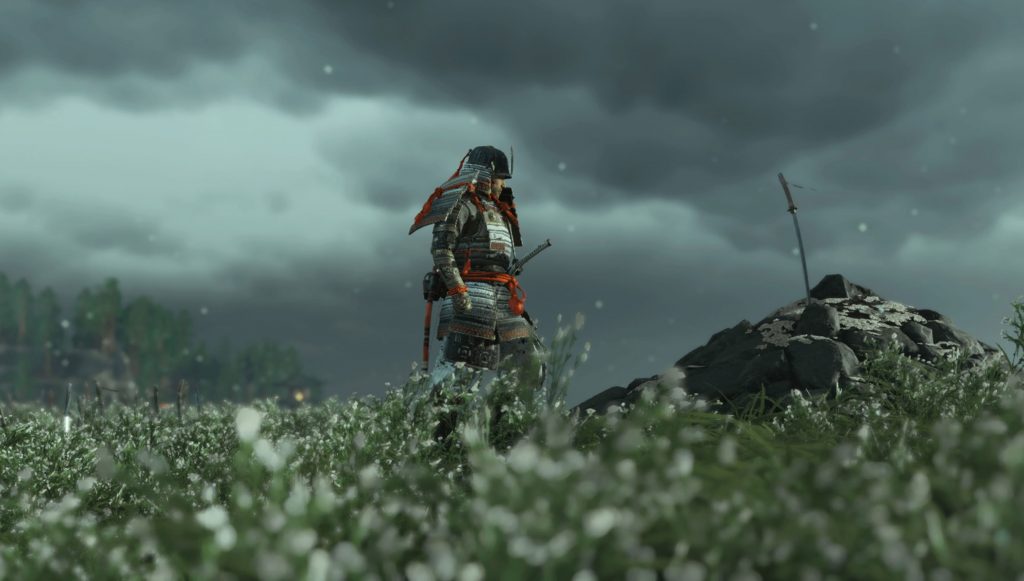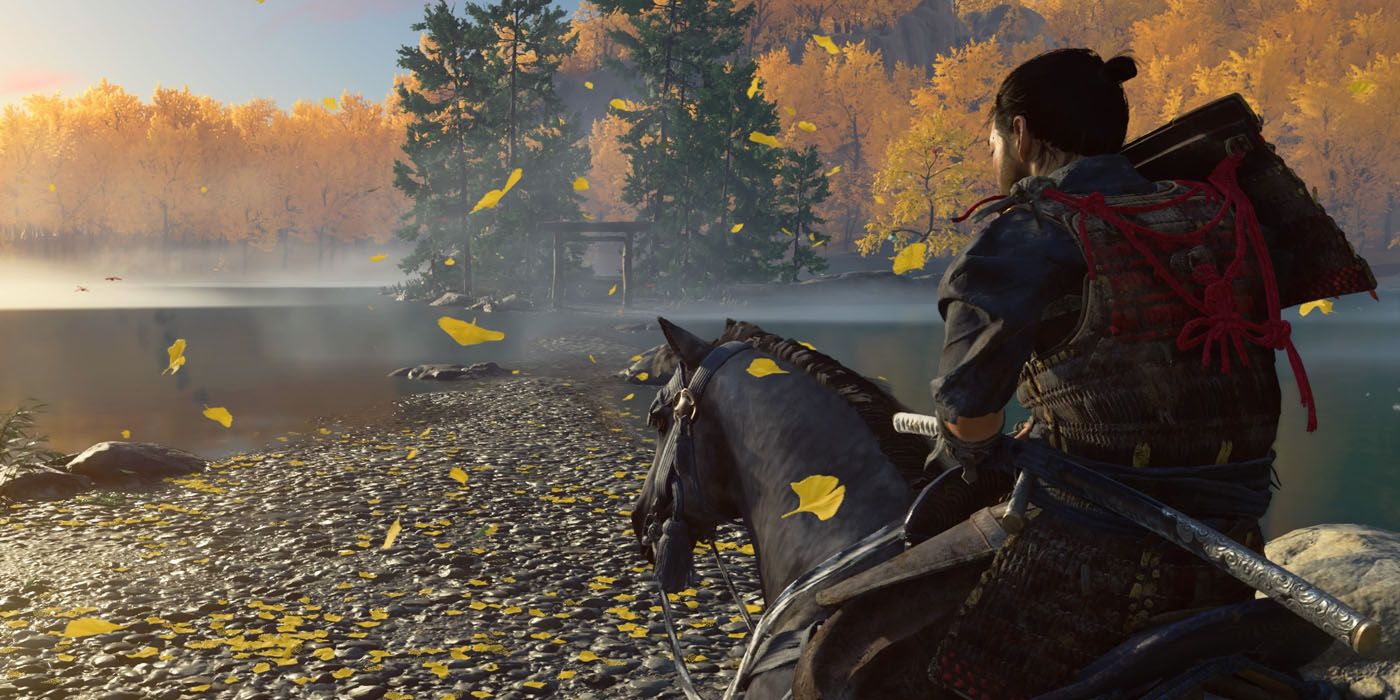
“Oh, there’s the outpost clearing mission”, “There’s the platforming puzzle”, “Goodie, collectibles”, “Ah, the elite unit challenge battle”. To the game’s credit it makes them feel like they belong in the world but it’s really hard not to see them for what they are. I honestly can’t remember any standout moment to moment gameplay though because the underlying formula is the same bog standard open world activities I’ve played in every other game with a new skin. My memories of the game are the vistas, Samurai flick cinematic moments, brilliant colour usage and atmosphere. This is a huge part of the reason why I’m feeling apathetic towards the Director’s cut.
#GHOST OF TSUSHIMA EXPANSION FULL#
“Ghost of Tsushima constantly calls to you with its overstuffed gaminess, the sky full of golden birds always eager to lead you to some new point of interest or collectible, but it’s at its best when it stops trying to distract and lets you just be in this gorgeous setting that deserves a better game.” (On PS5, fast travel is nigh-instantaneous when you do use it, though, which is impressive.)

I had to actually travel to wherever I was going, contending with Iki’s terrain as if it were a real place, not yet reduced to a collection of convenient waypoints. My favourite time with Iki, as with Tsushima, was when I first arrived, and every journey took me into new territory. Diffuse moonlight filling the sky on a cloudy night, or the turquoise waters of a shoreline strewn with corpses - wherever you go, there are striking sights to behold, some simply beautiful and others more complicated in the emotions they evoke. Unsurprisingly, Iki also shines in the same ways that Tsushima did, beckoning with natural wonder and the pleasures inherent in exploring it. Once you’ve figured that out, you’re ready for what Iki island throws at you. It behooves you to prioritise them, hunting them down in the chaos of the game’s many large-scale skirmishes. You do encounter a new enemy type, shamans, who are a real nuisance, performing chants that make your enemies fiercer and more resilient. Iki’s action is similarly workmanlike, with no particularly memorable new missions or significant wrinkles to combat. On Iki, he lacks great companions like Yuna who occasionally got him to lower his defences a bit and express a wider range of emotions. But for a narrative that plumbs such depths of grief and shame, it all feels rather flat, in part because Jin gives us so little access to his internal struggles.

Painful truths about his father become impossible to ignore, forcing him to confront his family’s legacy in new ways. There are revelations aplenty awaiting Jin on Iki. But here it’s just another plot point, failing to shake you up or even destabilize Jin all that much. This might have given Jin’s quest on Iki a significantly different flavour from that of the main game. Some games have done it with such energy that you can feel your character’s psyche fraying amid the hallucinatory immediacy of their visions. The concept of someone riding shotgun in the player-character’s mind has real potential. As a result, it also lacks the distinctive character and greatness of Kurosawa’s best films. Ghost of Tsushima is a decent enough open-world game, but it lacks the spark of true inspiration or daring that would set it apart from its peers. That’s thankfully no longer an issue in this director’s cut, but the larger reason why invoking Kurosawa’s name was a significant overreach remains.

However, the conspicuous lack of Japanese lip sync meant that, particularly in close-ups, any potential sense of authenticity was lost. Named for the brilliant Japanese filmmaker Akira Kurosawa, who made a number of legendary samurai epics, this mode combined a Japanese dub with a black-and-white filter and audio tweaks meant to mimic the sound of 1950s TVs.

See, when marketing the game’s original release last year, developer Sucker Punch revealed “Kurosawa mode,” an apparent effort to demonstrate that, despite being a western studio, it was taking the responsibility that comes with telling a story set in Japan’s past seriously. Of all the features announced for the PlayStation 5 version of Ghost of Tsushima’s new director’s cut - bullet points like “DualSense wireless controller haptic feedback” and “dynamic 4K resolution targeting 60 fps” - the one that most caught my attention was “lip sync for Japanese voiceover.”


 0 kommentar(er)
0 kommentar(er)
